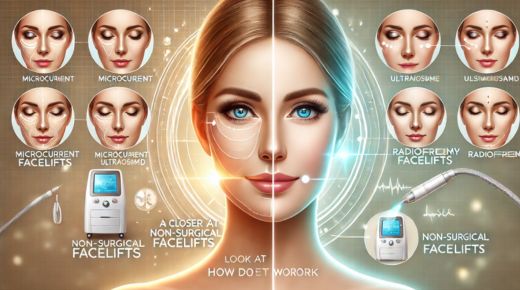Many want to look younger without going under the knife. Non-surgical facelifts offer a solution. These treatments tighten and lift the skin without surgery. This approach includes techniques like injections and ultrasound therapy. Unlike procedures such as otoplasty fort worth, which focus on the ears, non-surgical facelifts target signs of aging on the face. Let’s explore how these treatments work and what to expect.
Understanding Non-Surgical Facelifts
Non-surgical facelifts use advanced techniques to create a more youthful appearance. The goal is to restore skin vitality without invasive procedures. Treatments involve using dermal fillers, laser therapy, or ultrasound methods. Each technique has its strengths and can be tailored to individual needs.
Types of Non-Surgical Facelifts
There are several popular methods:
- Dermal Fillers: These are injected into specific areas to add volume and smooth wrinkles.
- Botox: This helps relax muscles that cause wrinkles and fine lines.
- Ultrasound Therapy: This uses sound waves to stimulate collagen production, tightening the skin.
How Do They Work?
Each method works differently but aims for similar results. Fillers plump the skin by adding volume. Botox reduces muscle activity, preventing new wrinkles from forming. Ultrasound therapy triggers the body’s natural healing process by boosting collagen, which supports skin structure and elasticity. According to the FDA, these methods are safe when performed by trained professionals.
Comparing Methods
It’s helpful to understand the differences between these treatments:
| Treatment | Benefits | Duration | Recovery Time |
| Dermal Fillers | Immediate volume, smooths wrinkles | 6-18 months | Minimal |
| Botox | Reduces fine lines, prevents new wrinkles | 3-6 months | Minimal |
| Ultrasound Therapy | Stimulates collagen, tightens skin | Up to 1 year | Minimal |
What to Expect?
The process starts with a consultation. Experts evaluate the skin and discuss goals. Treatment sessions typically last between 30 minutes to an hour. There’s little to no downtime, and side effects are usually mild. Redness or minor swelling may occur but fade quickly. The Mayo Clinic suggests monitoring for any unusual reactions.
Who Should Consider These Options?
Non-surgical facelifts suit those seeking subtle improvements without the commitment of surgery. Ideal candidates have mild to moderate signs of aging. This includes fine lines, sagging skin, and loss of facial volume. Younger individuals can also benefit from preventive treatments.
Conclusion
Non-surgical facelifts provide a versatile, less invasive option for facial rejuvenation. With various methods available, it allows for personalized treatment plans. Always seek advice from qualified professionals to ensure the best outcomes. This approach offers a balance between achieving aesthetic goals and maintaining a natural look.




